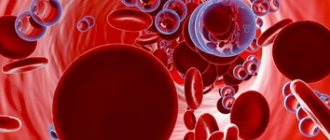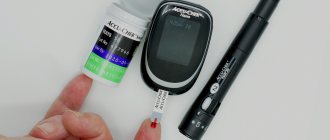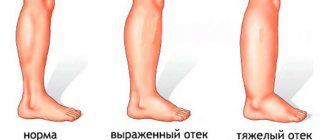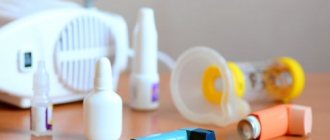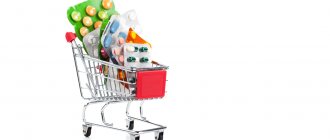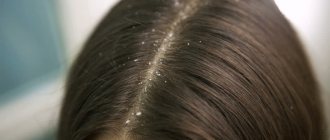Until recently, pulse oximeters were used only by athletes and people with pulmonary or cardiovascular diseases. Now these compact devices are literally swept away from stores and pharmacies. And why all? Because the Covid-19 epidemic has changed our lives greatly. The virus can cause pneumonia, which reduces oxygen saturation in the blood. To take timely measures, you can check saturation at home using a compact device. We found the best pulse oximeters on the market and figured out whether the device's readings can be trusted.
Measurement:
- Clean the surface of the device using a cotton pad with rubbing alcohol or an alcohol wipe. Do this before each use;
- Let the oximeter dry or wipe it with a clean, dry cloth;
- Insert your finger into the oximeter as shown in the diagram below. If your fingers are too thin or cold, insert your thumb or middle finger as deeply as possible into the testing probe to get a correct measurement. Make sure your finger is in the correct position between the rubber pads;
- Pinch your finger;
- Click on the button to get the test result. At this time, try to sit quietly, do not shake your hand or fingers;
- The result will appear on the screen. If, instead of correctly displaying data on the screen, you see incomprehensible symbols, then remove your finger from the oximeter and reinsert it;
- After 5 seconds of inactivity, the device will automatically turn off.
Attention!
Drugs such as dopamine, procaine, prilocaine, lidocaine, and butacaine can negatively affect the accuracy of the SpO2 measurement. These also include various lighting sources (lamps, infrared heaters, direct sunlight, etc.).
Precautions when using a pulse oximeter
1. Do not use the pulse oximeter with MRI or CT equipment.
2. Explosion Hazard: Do not use the pulse oximeter near an open flame.
3. This pulse oximeter is an aid to assess the patient's condition. Only a doctor can make a correct diagnosis based on other symptoms and clinical studies.
4. Constantly check the condition of the patient’s skin at the site where the pulse oximeter is attached to avoid disruption of blood circulation.
5. While the pulse oximeter is in operation, do not stretch the connecting tape, as this may cause inaccurate readings or skin irritation.
6. Please read the instructions carefully before using the device.
7. The pulse oximeter is not equipped with an alarm signal when SPO2 drops and is not suitable for continuous monitoring of this value.
8. If you use the device for a long time, you may need to periodically change the location of the sensor. At least every 4 hours, you should change the finger on which the pulse oximeter is installed, and also check the condition of the patient’s skin and the correct installation of the sensor.
9. To avoid loss of measurement accuracy, do not autoclave the device, sterilize it with ethyl alcohol, and avoid immersing the device in liquid.
10. If there is a significant level of dysfunctional hemoglobins (for example, carboxyl hemoglobin or methemoglobin), the device readings may not be accurate.
11. Intravascular dyes such as indocyanine green or methylene blue can also lead to inaccurate readings.
12. SpO2 may not be accurate enough in high light conditions. Please do not expose the device to direct sunlight.
13. Improper use of the pulse oximeter may result in inaccurate readings.
14. Medical devices that emit high frequency signals (defibrillator) may cause interference and affect the accuracy of the pulse oximeter readings.
15. If the sensor and blood pressure cuff are on the same arterial catheter or intravascular line, the readings may also be inaccurate.
16. Hypotension, severe vasoconstriction, severe anemia, or hypothermia may also lead to inaccurate readings.
17. Readings may also be inaccurate after stimulating measures during cardiac arrest or when the patient is in a state of tremor.
18. Dark or bright nail polish and gel polish may result in inaccurate SpO2 readings. In this case, it is better to take the measurement on the earlobe, after first removing the earring, if any.
19. Do not look into the testing probe while the device is operating, as the intense infrared light is harmful to the eyes.
Follow generally accepted practices and guidelines for the disposal of this type of device, including batteries.
…
Symbols and their meaning
| Peripheral oxygen saturation (SpO2) – saturation of hemoglobin with oxygen |
| Heart rate (HR) |
| Low battery indicator |
| Serial number |
Place your finger in the pulse oximeter with the nail facing up!
Note
Please use medical alcohol to clean the rubber surface inside the pulse oximeter and the finger itself before and after taking measurements. (The rubber surface inside the pulse oximeter is non-toxic and does not cause allergies or other side effects.)
..
Scope of application of the pulse oximeter
A finger pulse oximeter is used to measure heart rate and oxygen saturation of hemoglobin in the blood through a finger. The device can be used at home, in hospitals (by therapists, surgeons, anesthesiologists, pediatricians, resuscitators and other specialists), in social and medical organizations, to assess physical condition during sports. Use a pulse oximeter before or after doing any exercise. Use during training is not recommended. The device is also used by climbers, patients (recuperating at home or those who may need first aid), the elderly, people working more than 12 hours a day, athletes and people working in confined spaces, etc. The device is not adapted for continuous monitoring of the patient's condition.
How to choose a Chinese pulse oximeter on Aliexpress
Most often, pulse oximeters from China are ordered on Aliexpress. The popularity of orders from this online platform is due to low prices and free delivery. To find a product, you need to write “pulse oximeter” in the search on the site, and specify the search terms that are important to you in the filters. For example, “free shipping”, “sale - items on sale”, price level.
When choosing a device, I recommend reading reviews and paying attention to the product rating. The cost of pulse oximeters on Aliexpress starts from 150 rubles and on average rarely exceeds 1,500 thousand. The most expensive model I saw in a Chinese store is JZIKI . Its price is 8740 rubles.
The most popular brands and models
The following pulse oximeter models are in demand on Aliexpress:
- arstn (brands: m230b, m130b, m170a)
- xiaomi brand (models: yx305, Mijia Yuwell, yx303, yx102, yx301),
- IMDK (c101a2, md93)
- SRHMX (YK-80B, YK 81A, 81C, YK-83A)
- Contec (cms50d, 50DL)
- Yonker (YK-81C, YK-84, ABS, yk 80b, yk 82c, 81c, 80k)
- AB-88
- KIUZOU,
- Yongrow (YK-80C).
Comparison of Fingertip Pulse Oximeter models - AB-88 and OYK-83A
Let's test two Chinese models of pulse oximeters:
- AB-88 ordered on Aliexpress, price - 374 rubles.
- Yongrow OYK-83A bought on Joom for 755 rubles.
Model AB-88 removes 3 parameters - SPO2, heart rate and PI, OYK-83A - only 2 (without PI parameter).
readings taken from a healthy person using different devices
In the picture, the blue device is AB-88, and the white one is OYK-83A. The difference in heart rate is 3 units, I think that this error is not significant. A difference in saturation of 3 units also corresponds to the stated error of 2% (we mean that both devices have an error). Model OYK-83A always shows SPO2 higher than AB-88. Intuitively, it seems to me that OYK-83A provides more accurate data, because there are no objective reasons for the decrease in saturation in the subjects being examined. Both devices show the pulse correctly, the error is small.
Advantages and disadvantages of Chinese models Fingertip Pulse Oximeter
Pulse oximeters ordered from China have both positive and negative sides. Let's take a closer look at them.
pros
cheap
ease of measurement
small error
compact device
Minuses
are not certified, which means that the accuracy of the instruments is not guaranteed
long delivery
no batteries included
No. 3. What pulse oximeter readings are normal?
• Saturation of 100% is an unrealistic indicator, since even in a completely healthy person, all hemoglobin molecules cannot capture all 4 oxygen molecules.
• The norm for men and women is 95-99%. • The norm for older people is slightly lower – 94-98%. • The norm for newborns and small children is 93-96%. • For smokers and people with chronic diseases of the respiratory system, the rate is lower - 92-95%. • When infected with coronavirus, hospitalization is indicated when saturation is below 93%. • Saturation less than 90% is a reason to urgently seek medical help. The reason is not always the coronavirus. There are many other equally serious and dangerous diseases.
UPD: inexpensive pulse oximeters
DEAR READERS, FOR THE COOLEST SALE FROM ALIEXPRESS ON 11.11.2021 WE HAVE PREPARED A PROMOTION FOR THE BEST CHEAP PULSE OXIMETERS. Just click on this ad
Perhaps the devices listed above seemed a little expensive to you, then we offer you a cheaper alternative. Please note that this is a purchase at your own risk. Here are some interesting options.
Pulse Oximeter
A miracle of Chinese production, which is actively sold on Aliexpress for 500 rubles ($6.5), and in domestic online stores - from 900 rubles (almost $12). We can’t find any information about the brand or the model name, so for us it will remain just Pulse Oximeter. It shows pulse, saturation and pulse wave, turns off after 8 seconds of inactivity. There is a sound indication for low saturation and arrhythmia. Powered by two AAA batteries, not included, but the product comes with a strap. This is surprising, but hundreds of reviews say that the device does its job well and gives accurate measurements if all instructions are followed.
You can find it on the sites due to its low price and appearance. It is almost exactly the same as the CONTEC CMS 50D we mentioned above, only it comes in a different box without the brand name. It turns out that this is a Chinese replica, since even on Aliexpress the CONTEC CMS 50D costs at least 2,300 rubles ($30). Cheap and cheerful. If you decide to, you can buy it here.
Attention to the packaging and its difference from CONTEC CMS 50D
ARSTN Oximeter M170A
Another example of a popular device from Aliexpress. If you believe the reviews, this pulse oximeter is quite functional and, most importantly, accurate. Users note that they checked the readings with devices in clinics, and the result was the same. This model has several brightness levels, sound notification, and collects statistics. It is powered by two batteries and comes with a solid case. Cost – 1080 rubles (about $14).
You can view the model here. The page also presents other models of the manufacturer; there are also cheaper ones, without sound alerts and with an LED screen. Judging by the reviews, all are accurate, but be careful when purchasing - do not confuse the models.
YK-82C
Nice device with a bright display. The user is given the opportunity to assign the minimum and maximum permissible values of heart rate and saturation, and outside this range, sound and light indications will be triggered. There are several information output modes. The kit includes a case and lanyard, no batteries. The reviews are very good. Price – 800 rubles (a little more than $10). You can order here.
Tips for use and precautions:
- The device is designed for 3 years of use;
- This model is not suitable for use on newborns and children under 4 years of age;
- The recommended body weight of the subject should be from 15 to 110 kg;
- Please note that for a correct result, the nails during testing should not be too long and painted;
- It is not recommended to carry out the test on the same finger for 2 hours, because painful sensations may appear;
- Hold off on testing if there is a sudden change in the temperature around you if you had an oximeter with you (for example, going into a warm room after a cold street);
- Do not use the oximeter in these cases: while the subject is taking MRI and CT scans, near flammable gases, if you are allergic to rubber, or if your finger is swollen, sore, or irritated;
- Do not look into the testing probe while the device is operating, as infrared light is harmful to the eyes;
- Treat the oximeter with care, store it away from dust and hazardous substances, in a dry room not in direct sunlight. If there is high humidity, the device may be damaged or even break down;
- It is recommended to check the oximeter once a week for damage. If you find any damage or the device gets wet, stop using it;
- Do not repair the device yourself;
- Disinfect the oximeter only in the manner specified in the instructions. To clean the case, just use a cotton pad with medical alcohol or an alcohol wipe;
- If you do not plan to use the oximeter for a month or more, then remove the batteries from it;
- Drugs such as dopamine, procaine, prilocaine, lidocaine, and butacaine can negatively affect the accuracy of the SpO2 measurement. These also include various lighting sources that it is advisable to avoid during testing (lamps, infrared heaters, direct sunlight, etc.).
Possible problems and their solutions
| Problem | Possible reason | Solution |
| SPO2 and HR are unusual or not displayed at all | 1. The finger is not positioned correctly 2. The patient's oxyhemoglobin level is too low | 1. Try again. Place your finger with your nail facing up 2. Repeat several times. If you are sure that the device is in good condition, consult a doctor immediately |
| SPO2 and heart rate readings are unstable | 1. The finger is not placed deep enough 2. The finger trembles or the patient moves | 1. Place your finger deeper into the pulse oximeter 2. Do not move |
| The device does not turn on | 1. Batteries are dead 2. Batteries are not installed correctly 3. The device is damaged | 1. Replace the batteries 2. Install the batteries correctly 3. Contact the service center |
| The screen suddenly went dark | 1. The device automatically turned off 8 seconds after no signal 2. Not enough power | 1. Everything is good 2. Replace batteries |
Operating principle of a pulse oximeter
The theoretical basis of this method follows from the Lambert-Beer law for the corresponding characteristics of the absorption spectra of reduced hemoglobin (RHb, deoxyhemoglobin - oxygen-free hemoglobin) and oxyhemoglobin (O2Hb) in the visible and near-infrared regions of the spectrum. The operating principle of the device is to combine technologies for photoelectronic hemoglobin monitoring, pulse rate scanning and recording of results. To do this, two beams of light with wavelengths of 660 nm (visible zone) and 940 nm (near-infrared zone) are passed through a person’s finger placed with the nail up into this device. The signal passing through the finger is recorded using a photosensitive element, then the information is processed and analyzed by a microprocessor. You see the result on the screen in the form of two numbers - heart rate and oxygen saturation of hemoglobin in the blood.
The advantages of a finger-worn pulse oximeter are its compact size, low power consumption, ease of use and portability. The patient only needs to place one finger in the photoelectric sensor, and the device will immediately show the degree of oxygen saturation of hemoglobin in the blood. The accuracy of this method has been proven in clinical studies.
….
How to use a pulse oximeter
1. Insert two AAA batteries into the appropriate compartment and close the cover.
2. Open the clamp, place one finger inside the pulse oximeter with your nail facing up, and release the clamp.
3. Turn on the device by pressing the button.
4. Do not move your finger while the pulse oximeter is operating. It is also not recommended to move.
5. Press the button if you want to change the display orientation.
6. Take the readings shown on the display.
7. If there is no incoming signal, the pulse oximeter turns off automatically.
8. Please replace the batteries when the low battery indicator lights up on the display.
.
Purpose of a pulse oximeter on the finger Fingertip Pulse Oximeter
The FingertipPulseOximeter is an innovative portable medical device for rapid, accurate and continuous measurement of pulse rate and peripheral arterial hemoglobin oxygen saturation in a non-invasive manner. (The saturation of hemoglobin in arterial blood with oxygen is called saturation (SaO2). SaO2 values > 94% are considered normal. At lower values, oxygen therapy is used.) The pulse oximeter is intended for self-diagnosis of hypoxia at home.
What is a pulse oximeter
Some consider pulse oximetry readings to be the fifth vital sign. The pulse oximeter provides a quick assessment of peripheral oxygen saturation (SPO2), providing valuable clinical data in a very effective, non-invasive and convenient way. To put it simply, everyone knows that life requires oxygen. Oxygen enters the lungs and then enters the blood. Oxygen is carried by red blood cells by binding to the protein hemoglobin. One hemoglobin molecule can carry 4 oxygen molecules. The more hemoglobin bound to O2, the higher the saturation. Hemoglobin bound to oxygen is called oxyhemoglobin, while hemoglobin free from oxygen is called deoxyhemoglobin.
How does a pulse oximeter work?
Pulse oximetry uses light to determine oxygen saturation. Light is emitted by light sources, which travels from the emitting sensor and reaches the perceiver.
If you place your finger between the light source and the light detector, the light will now have to pass through the finger to reach the detector. Some of the light will be absorbed by the finger, and some that is not absorbed will reach the light sensor.
The amount of light absorbed by the finger depends on many physical properties, and these properties are used by the pulse oximeter to calculate oxygen saturation.
The amount of light absorbed depends on the following factors:
- concentration of light-absorbing substance.
- light path length in an absorbing substance
- Oxyhemoglobin and deoxyhemoglobin absorb red and infrared light differently.
One of the physical properties on which the operating principle of a pulse oximeter is based is that oxyhemoglobin absorbs more infrared light, and deoxyhemoglobin absorbs more red light. Let's remember the school physics course. All light is made up of different wavelengths. The distance between two adjacent waves is the wavelength. Waves of different spectrums have different lengths.
A pulse oximeter uses two light sources to analyze hemoglobin. One of them is red light with a wavelength of about 650 nm. The other is infrared light with a wavelength of 950 nm. The principle of determining oxygenation is based on comparing the absorption of red and infrared light.
What indicators do the Chinese Pulse Oximeter measure?
The standard device shows the following parameters on the display:
- pulse,
- SPO2 (saturation),
- the %PI coefficient is determined by some models.
Pulse is an important indicator of human health. Its normal values range from 60-90 per minute. In general, a lower resting heart rate means a more efficient heart and better cardiovascular health. For some people, a heart rate below 60 beats per minute indicates an abnormally slow heart rate, also known as bradycardia. Bradycardia can cause a number of problematic symptoms, including fainting, fatigue, chest pain, and memory problems. With tachycardia, cardiac output is reduced and the heart does not work efficiently.
Saturation is an important physiological parameter for diagnosing diseases of the respiratory and circulatory systems. SPO2 norm is equal to values from 95 to 99% in adults and 92-95% in newborns due to physiological characteristics. Diagnosis of respiratory failure by saturation level:
I degree - 90-94%,
II degree - 75-89%,
III degree - less than 75%.
It is important for clinicians to know the perfusion index (PI) . It shows the intensity of peripheral blood flow volume. The devices are marked PI. Its values range from 0.02% to 20.0%. Normal indicators are 4-7%.
How to use a pulse oximeter
This portable device, comparable in size to a matchbox, is a clothespin. Most Fingertip Pulse Oximeters are designed to take measurements on the fingers, as indicated by their "Fingertip" name. There are models that take readings from the earlobes. In this case, the sensor is attached to the ear and connected by a wire to the display. Finger devices are more popular.
model with ear sensor
Simply put, to take measurements with a finger device, you need to turn on the device and put your finger in a special hole. Ear aids turn on and attach the sensor to the earlobe. The waiting time for measurements is from several seconds to 1 minute, depending on the model.
Instructions for a Chinese brand pulse oximeter in Russian
Most Chinese devices for measuring saturation are equipped with instructions in a foreign language (English, Chinese and even Polish). Check out the Russian translation of some of the most important points about working with the device.
Measurement progress:
- Install two AAA batteries into the battery cassette before use.
- Insert one finger into the rubber hole of the Oximeter so that the nail is at the top. Place your finger as deep as possible.
- Press the button on the front panel.
- The finger should not tremble while the oximeter is operating. Do not move during measurements.
- When the results on the display stabilize, take the data.
- Not suitable for saturation studies in newborns.
Recommendations for care and use
- Open the cover of the lower part of the device, focusing on the arrow, and install pinky batteries (AAA type) according to the poles.
- Replace the batteries promptly when the display indicator indicates a low charge level.
- Remove the batteries from the device if you will not use the oximeter for an extended period of time.
- The pulse oximeter comes with a cord. Pass the current part of the cord into a special hole, and pull the remaining part through the eye of the thin cord. Tighten.
- Before working with patients, clean the inside surface with medical alcohol.
- Use ethyl alcohol to disinfect the rubber of the pulse oximeter. Remove batteries before cleaning.
- Store at a temperature of 10-40° in a dry place (humidity no more than 10%).
Peculiarities
- LED display,
- Low power consumption designed for continuous operation for 6 hours with AAA batteries.
- no sound signal,
- display type - LED (LED display),
- 8 seconds after there are no signals, the device goes into standby mode.
- The stated measurement accuracy is ±2% in the range of 70%-99%. At saturation below 70% the accuracy is not determined.
- average dimensions: 60 mm *32 mm *35 mm
What causes inaccurate measurement results?
It's no secret that Chinese pulse oximeters can give inaccurate measurements. Not everyone knows that their accuracy depends not only on the quality of the device, but also on the methodology and certain conditions.
- Improper care and use. The use of autoclaving, sterilization and immersion of sensors in liquid.
- Significant levels of dysfunctional hemoglobin (carboxyhemoglobin, methemoglobin), for example, with carbon monoxide asphyxiation.
- Application of intravascular dyes.
- Patient movements during measurements.
- A high frequency medical signal or interference caused by a defibrillator may cause measurement errors.
- Hypotension, severe vasoconstriction, severe anemia, or hyperthermia will prevent accurate readings.
- Nail polish distorts the results.
General description of the pulse oximeter
Saturation (saturation) of hemoglobin with oxygen is the percentage ratio between the concentration of oxyhemoglobin (HbO2 fully oxygenated hemoglobin) and the total content of hemoglobin in the blood (Hb + HbO2). In other words, this is the content of oxyhemoglobin in the blood. This is a very important physiological parameter for the respiratory and circulatory systems. Many respiratory diseases reduce the oxygen saturation of hemoglobin in a person's blood. In addition, factors such as dysfunction of automatic organic regulation caused by anesthesia, trauma from major surgery, and other medical interventions can also cause a person's hemoglobin oxygen saturation to decrease. Thus, this leads to the appearance of symptoms such as migraines, vomiting, and asthenia in patients. Therefore, such a parameter as the degree of oxygen saturation of hemoglobin is a very important medical indicator.
The advantages of a finger-worn pulse oximeter are its compact size, low power consumption, ease of use and portability. The patient only needs to place one finger in the photoelectric sensor, and the device will immediately show the degree of oxygen saturation of hemoglobin in the blood. The accuracy of this method has been proven in clinical studies.
Specifications
1. Display type: LCD or OLED display 2. SpO2: Measuring range: 70%-99% Accuracy: ±2% at 70%-99%, not measuring SP02 ≤70% Resolution: ±1% 3 Heart rate: Measuring range: 30-240 beats per minute Accuracy: ±1 beats per minute or ±1% (at high heart rate values) 4. Power: two AAA alkaline batteries, 1.5V 5. Energy consumption: less than 30 mA 6 .Automatic power off: the device turns off by itself without a finger in it 7. Size: 62mm, 32mm, 33mm 8. Operating conditions: Operating temperature: 5 °C-40 °C Storage temperature: -10 - 40 °C Humidity: 15 % ~ 80% when working, 10% ~ 80% when storing Atmospheric pressure: 70 kPa ~ 106 kPa 9. Announcement: The EMC of this product complies with IEC60601-1-2 standard


